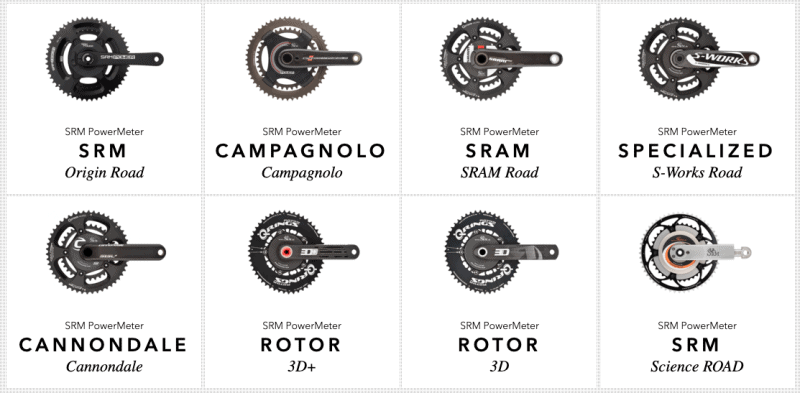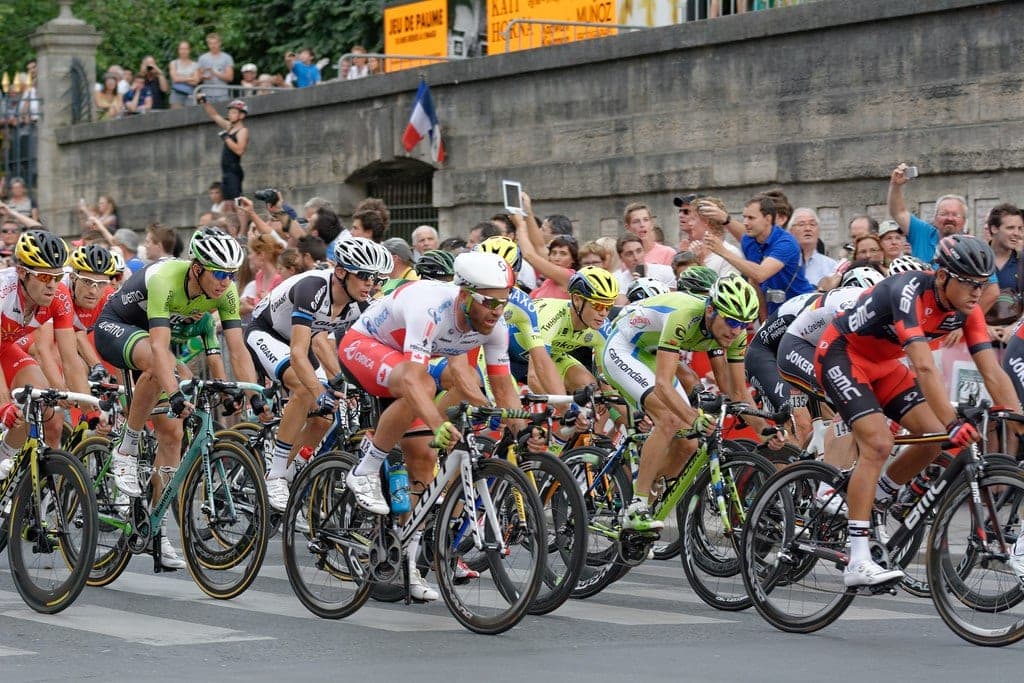Road Bike Gears Explained : Why the Right Choice Matters
I often come across cyclists saying things such as,
I ran out of gears on the descend.
Only if I have 1 or 2 lower gears, I’d finish the climb strongly.
If I’d have another gear, I wouldn’t have cramped.
Look, gearing is a very important aspect in cycling but it’s often overlooked by many as it can quickly become very technical. After all, we all want to ride our bikes and not sweat much over the technicals and mathematics behind it.
Understanding the basics behind the gearing would help you make a better-informed decision the next time you think about replacing or upgrading your drivetrain.
Having the ideal gears would definitely make your riding much more enjoyable.
On this page, I’ll explain to you the various jargon and terminologies road cyclists used and how to determine the ideal gearing setup for your type of riding.
On This Page
Anatomy of a Road Bike Drivetrain
Before I jump into more complicated topics, I’ll spend some time going through the various components that make up a bike’s drivetrain.
If you’re already familiar with these, then you can skip this section.
- Chainring. The chainring is the large pair of cogs at the front where your pedals connect to. Most road bikes have double chainrings (sometimes called 2X). Kids, cyclocross, gravel, and mountain bikes usually have just a single chainring (1X). Commuter bikes are likely to have up to triple chainrings (3X).
- Cassette. The cassette is the smaller set of gears on the right side (also called the drive side) of the rear wheel. They can range from 7 all the way up to 13 cogs. More cogs mean a broader range of ears. Each cog can be made up of 9 up to 52 teeth. The more teeth, the lower the gearing is. For example, 11-50T means that the smallest cog has 11 teeth and the largest cog has 50 teeth.
- Chain. The chain connects the chainring and cassette together and is the driving force that takes the energy from the pedals and turns it into forwarding motion. Typically made of steel or aluminum, the chain has holes that fit perfectly into the teeth of the cassette and chainring to avoid slipping.
- Front Derailleur, sometimes referred to as just FD, is attached to the frame on the seat tube. It de-rails the chain from one chainring to the other, both up and down. A 1X bike will not have a front derailleur.
- Rear Derailleur, also known as RD, hangs from the frame via a derailleur hanger from the chainstay. It moves the chain along the cassette, giving you access to a range of high and low gears.
- Shifters. The shifters are the mechanism that uses cable tension or electrical signal to make the derailleurs change gear. These days, the shifters are integrated with the brake levers. Shimano calls this STI (Shimano Total Integration).
Mechanical vs Electronic Drivetrain
Did you know that Mavic was actually the first to introduce an electronic drivetrain way back in 1992?
It’s called the Mavic Zap, but unfortunately, it didn’t hit the mainstream.
It was not until 2009 that Shimano launched its first generation of Di2 (Digital Integrated Intelligence), the Dura-Ace 7970. Then in 2012, Campagnolo introduced the EPS.
SRAM was the last of the 3 big drivetrain manufacturers to introduce an electronic drivetrain. In 2015, SRAM introduced its first wireless, electronic drivetrain, the SRAM eTap.
Over the past few years, many discussions are surrounding whether one should get a mechanical or an electronic drivetrain.
So, let’s take a look a the pros and cons of each.
Mechanical Drivetrain - The Good vs Bad
- Cheaper. Mechanical drivetrains significantly cheaper than electronic gears while providing a smooth shifting experience.
- Don’t use batteries. Remembering to keep your Di2 battery charged or having to wait while it charges before you ride is one more complication a rider doesn’t need.
- Susceptible to cable wear and failure. Over time, the shifter cable will get worn out as it rubs against the cable housing when you shift. Also, as the derailleurs use cable tension to shift, the cable will be stretched. A good practice is to get a new set of cables yearly.
- Needs constant indexing. As the cable stretches, you’ll need to perform micro-indexing to ensure the derailleurs shift accurately.
Eletronic Drivetrain - The Good and Bad
- Very smooth and accurate shifting. Electronic shifting is smooth and quiet and while a well-tuned mechanical groupset can do the same, once you try electronic you don’t want to go back. Once set up, you will probably never need to index the gears again (unless you get a new set of wheels).
- Self-trimming – The front derailleur on an electronic groupset will automatically align itself to avoid chain rub. It does this by over-shifting to quickly move the chain and then self-trim to compensate for that over-shift.
- Expensive. They’re not cheap and very often cost at least 2x the price of the equivalent mechanical drivetrain.
- Batteries. Another battery to maintain and remember to keep charged. While most groupsets will warn you in advance of a flat battery, you need to remember to check before longer rides!
How Many Speed Do You Need?
One of the arguments I hear from people is that the more speed the drivetrain has, the better it is.
But, is it really?
Speed refers to the number of cogs in the rear cassette. Multiply the speed with the number of front chainrings, you’ll get the total available gears on the drivetrain.
For example, a 22-speed drivetrain is made up of 2 front chainrings with an 11-speed cassette. That makes 2 x 11 = 22 speed.
Or, 1x chainring with 12 cogs cassette, that would be 1 x 12 = 12 speed.
Confusing, I know.
These days, the minimum for road bikes is either 11 or 12-speed. Older bikes (pre-2012) could still be running 10-speed drivetrains.
Shimano road drivetrains are 11-speed, while SRAM and Campagnolo are 12-speed.
Regardless of whether it’s 22 or 24-speed, you’ll have enough gears for most terrain with some crossovers. Crossover is where a ratio is the same between the small and big chainring.
For example, 53×19 is the same gear ratio as a 39×14, meaning the big chainring at the front and 19T at the rear is the same gearing as a small chainring upfront and 14T if you have a 53/39 chainset.
So, what’s the difference between 11 and 12-speed then?
The more speed, the tighter the gear ratio is.
In other words, there’s a smaller jump between adjacent gears. It might sound like a trivial matter for most cyclists, but it can be greatly felt especially when you’re riding at your limits. A smaller jump allows you to maintain a more consistent cadence overtime.
Rather than sweating over the speed, I think the cassette choice is a more important factor, especially for recreational cyclists.
Choosing the Ideal Rear Cassette
Cassettes come in many configurations and understanding what they mean, how they ride help you greatly over your gearing choices.
The numbers on the cassette represent the highest and lowest gears on it.
- 11-23 : 11-12-13-14-15-16-17-18-19-21-23
- 11-25 : 11-12-13-14-15-16-17-19-21-23-25
- 11-28 : 11-12-13-14-15-17-19-21-23-25-28
- 11-32 : 11-12-13-14-16-18-20-22-25-28-32
- 12-25 : 12-13-14-15-16-17-18-19-21-23-25
- 14-28 : 14-15-16-17-18-19-20-21-23-25-28
For example, a 11-23T cassette has 11T as the highest gear and 23T as the lowest gear.
A cassette with a closer gap (eg: 11-23T) will have a tighter ratio compared to 11-34T.
Notice the larger gaps?
The key to deciding the type of cassette depends a lot on the type of riding you do and the terrain.
Here’s a quick way to determine the type of cassette you need.
- 11-23T or 11-25T. If you ride mostly on flat terrains, you want a cassette with a tighter ratio.
- 11-28T. If you’re after a versatile, all-rounder, this cassette is very popular among a lot of cyclists.
- 11-30T. If you ride very hilly terrains, you might want to consider this, or even 11-34T for the steepest hills.
Standard, Semi-compact or Compact Chainring?
The typical road bike setup will be two chainrings upfront. They will generally come in different ratios called standard, compact, and semi-compact.
- The standard would be 53/39T, which is 53 teeth on the big ring and 39 on the small. This is typical for road bikes for stronger or more experienced riders or for relatively flat terrain as they are geared for speed.
- The compact would be 50/34T and would be suitable for hillier terrain. The smaller rings mean lower gearing, which is suited for long days in the saddle, new cyclists, or hills.
- Semi-compact at 52/36T is the middle ground, suitable for sportive riders, long days in the saddle, or undulating terrain. The 52/36T sits between the compact and the standard, hence the name.
To make things more complicated, SRAM offers different chainring options for its 12-speed drivetrain. They’re available in 50/37T, 48/35T, and 46/33T. The principles of gearing are the same but the exact ratios differ slightly.
Finally, there is the TT chainring for flat and fast terrains. It will use either a 54 or 55 and a 39 tooth ring. A larger big ring means a faster top speed and for the average TT held on relatively flat terrain, helps maintain that speed over the distance.
These aren’t suitable for other types of riding though unless you have the power output of Fabian Cancellara or Tony Martin.
Read More : Why You Should Consider Using A Compact Crankset
What Are Gear Ratios?
The ratio describes how many times the back wheel rotates for a single rotation of the pedals.
For example, if you’re on the big ring on a standard chainring and in 12T at the rear, that’s 53/12 or a ratio of 52:12 which breaks down to 4.42. For every rotation of your pedals, your rear wheel will rotate 4.42 times.
Another example would be a 36T chainring using that same 12T rear cog. This gives a ratio of 3:1. One full revolution of the pedals will rotate the rear wheel 3 times.
Ratios are further complicated by progression meters. This is used in Europe to express how far the bike would travel with one full revolution of the pedals. This also takes into account wheel size as this has an influence over how far the bike will travel.
In our example above, 53/12 using standard 700C wheels, the bike would travel 9.28 meters. In the 36/12 example, it would travel 6.3 meters.
As I said, you don’t need to know gear ratios in this depth unless you really want to.




